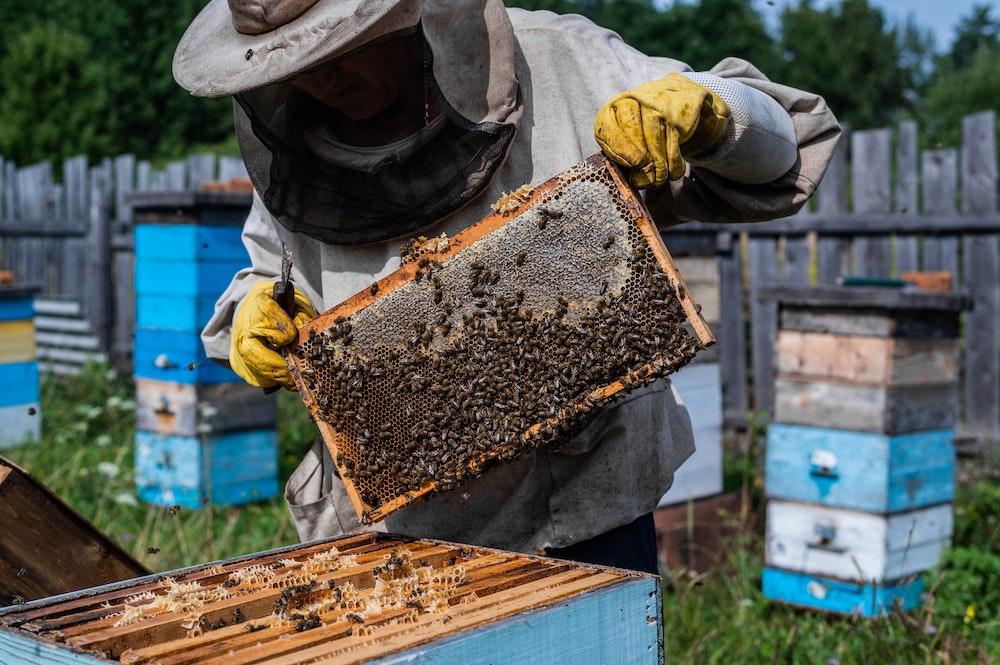What Are the Best Practices for Implementing Beekeeping Projects in Urban Neighborhoods?

The cityscape is no longer exclusive to the hustle and bustle of human activities. In recent years, it has become a thriving hub for another industrious species – bees. Urban beekeeping is more than a trend; it is a beacon of hope for declining bee populations and a testament to the resilience of nature. From rooftops to patios, private residences to public buildings, bees are finding new homes in the heart of cities. The taste of honey collected from urban hives is as diverse and vibrant as the cities themselves, offering a unique blend of floral notes from a variety of plants found within city limits. For those of you interested in joining the ranks of urban beekeepers, this article will provide useful insights and best practices for implementing beekeeping projects in urban neighborhoods.
Why Urban Beekeeping?
Urban beekeeping is not just a hobby; it can contribute significantly to the health of the local environment and the global ecosystem. Bees are essential pollinators that play a crucial role in our food systems. The rapid decline of bee populations around the world has raised concerns about the impact on global food security. Urban beekeeping can be part of the solution, offering safe havens for bees where they can thrive and contribute to biodiversity in cities.
Also read : How Does the Practice of Zazen Meditation Affect the Management of Chronic Stress?
Additionally, urban beekeeping can help to educate city residents about the importance of bees and other pollinators, fostering a more profound connection with nature amidst the concrete jungle. While urban beekeeping comes with its set of challenges, the rewards far outweigh the difficulties. Not only do you get the satisfaction of aiding in ecological conservation, but you also get to enjoy the fruits of your labor in the form of sweet, delicious honey.
Best Practices for Urban Beekeeping
A successful urban beekeeper is one who not only maintains healthy hives but also fosters positive relationships with the surrounding community. Here’s what you need to consider:
In the same genre : What Is the Impact of Intergenerational Gardening Programs on Childhood Nutrition Education?
Starting an Urban Beekeeping Project
Urban beekeeping projects begin with research. Understanding your local laws and regulations regarding beekeeping is essential. Some cities, such as Portland, Oregon, require beekeepers to register their hives, while others may have restrictions on the number of hives allowed per property.
Once you have familiarized yourself with the legal landscape, the next step is planning your beekeeping space. Urban beekeepers often utilize rooftops, balconies, or small yards for their hives. However, it’s important to consider the bees’ flight paths and ensure they won’t pose a nuisance to your neighbors. Provide a source of clean water nearby to prevent bees from seeking water in neighboring pools or birdbaths.
Choosing the Right Bees and Equipment
Not all bees are equal when it comes to urban beekeeping. Some bee species are better suited to city life than others, and choosing the best fit can significantly impact the success of your beekeeping project. Italian honeybees, for instance, are known for their docile nature and adaptability to various environments, making them a popular choice among urban beekeepers.
As for beekeeping equipment, a hive is paramount. Langstroth hives are commonly used due to their modular design, which makes hive management easier. A bee suit, hive tools, and a smoker are also essential pieces of equipment for urban beekeepers.
Community Engagement and Education
Beekeeping in urban settings requires open communication and education within the community. Some people may have fears or misconceptions about bees, so it’s important to inform and reassure them about the safety measures you’re taking to prevent bee-related incidents.
Hosting workshops, offering hive tours, or even sharing honey with neighbors can foster a sense of community and promote a positive attitude toward urban beekeeping. Incorporating educational elements into your beekeeping project can also raise awareness about the importance of bees as pollinators and their role in our food systems.
Collecting and Using Data for Bee Health
Monitoring the health of your beehive is a critical part of urban beekeeping. Regular hive inspections can help you detect issues early and take proactive measures to ensure the colony’s health. Data collection can be a valuable tool in this regard.
By tracking metrics such as honey production, brood pattern, and bee behavior, you can identify patterns and trends that provide insights into the colony’s health. Various technologies, such as hive scales and infrared cameras, can aid in this data collection process.
Additionally, participating in citizen science projects like the Oregon Bee Project can contribute valuable data to research studies working towards improving the health of bee populations.
The Role of Cities in Supporting Urban Beekeeping
The rise of urban beekeeping has spurred many cities to implement policies and initiatives to support this eco-friendly practice. From simplifying the process of hive registration to creating pollinator-friendly landscapes in public spaces, cities can play a significant role in promoting urban beekeeping.
Some cities have even integrated beekeeping into their urban planning strategies. The city of Portland, Oregon, for instance, has a "Bee City USA" designation and has made strides in creating an urban environment that supports the health and proliferation of bees. From its pesticide-free parks to its community beekeeping workshops, Portland serves as a model for cities aiming to become bee-friendly.
Urban beekeeping is a rewarding endeavor that contributes positively to our environment, food systems, and communities. By adhering to best practices and fostering a spirit of community and education, you can ensure the success of your urban beekeeping project. So why not take the plunge and start your beekeeping journey today?
Hive Maintenance and Monitoring for Optimal Bee Health
Maintaining the health and well-being of your honey bees is essential in urban beekeeping. Regular hive inspections, a well-balanced diet, and effective pest management strategies are crucial factors to consider.
When conducting hive inspections, observe the behavior of the bees and the condition of the hive. Look for signs of illness, such as irregular brood patterns, dwindling bee numbers, or the presence of pests, and take measures to address these issues promptly.
Feeding the bees with a suitable diet is equally essential. While bees obtain their food from nectar and pollen, urban environments might sometimes lack these resources, especially during certain seasons. In such cases, supplemental feeding with a sugar solution or pollen substitutes can help.
Pests and diseases present a significant threat to bee health. Varroa mites, in particular, have been a major concern for beekeepers. Studies by researchers like Ramesh Sagili at Oregon State University have proved the importance of regular monitoring and effective control strategies for these mites.
Maintaining hive health requires vigilance and an in-depth understanding of bee behavior and health indicators. Luckily, resources like the Oregon Master Beekeeper Program offer educational materials and support to beekeepers aiming to improve their skills.
Implementing a Bee Monitoring System
Implementing a monitoring system for your bee colony is an excellent practice for urban beekeeping. The data collected can provide invaluable insights into the health and productivity of the hive.
A well-designed monitoring system can track several key parameters, such as temperature, humidity, honey and brood production, and bee behavior. This can help in early detection of issues and enable proactive interventions.
Technological advancements have made monitoring more accessible and efficient. Hive scales, for instance, can measure hive weight changes, indicating honey production or bee population fluctuations. Infrared cameras can detect heat patterns in the hive, providing information about brood rearing and colony clustering.
Beekeepers can also contribute to broader efforts for bee conservation through citizen science initiatives. The Oregon Bee Project, for instance, encourages beekeepers to share their hive data for research purposes. This data contributes to a larger pool of information used by scientists like Andony Melathopoulos to study pollinator health on a wider scale.
Conclusion
Urban beekeeping is an enriching practice that offers manifold benefits – from enhancing local biodiversity, boosting pollination, to fostering community engagement and education. With meticulous planning, adhering to best practices, continuous learning, and a commitment to bee health, you can successfully establish a thriving bee colony in your urban neighborhood.
Cities too play a pivotal role in promoting and supporting urban beekeeping. By simplifying procedures for hive registration, supporting beekeeper programs, and creating pollinator-friendly urban landscapes, they can significantly contribute to the success of urban beekeeping projects.
Remember, every honey bee colony nurtured adds to the collective efforts in reversing the declining bee populations, enhancing our ecosystems, and securing our food systems. Your contribution as an urban beekeeper makes a difference. So why wait? Embrace the practice of urban beekeeping and join the ranks of urban beekeepers shaping a more sustainable future for our cities.
